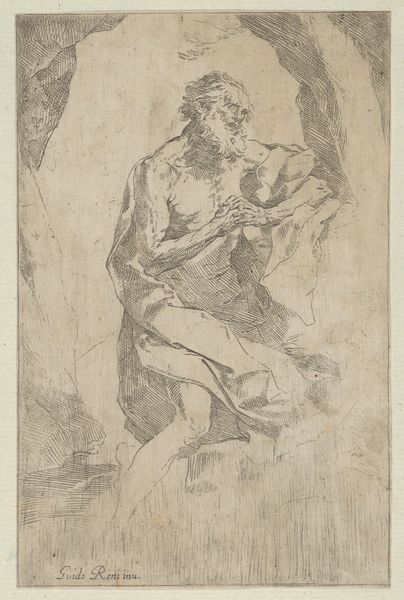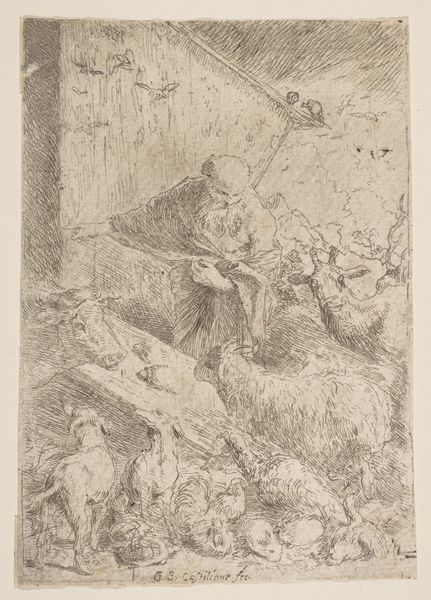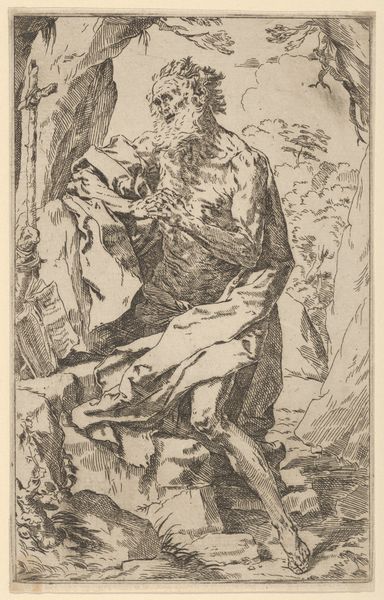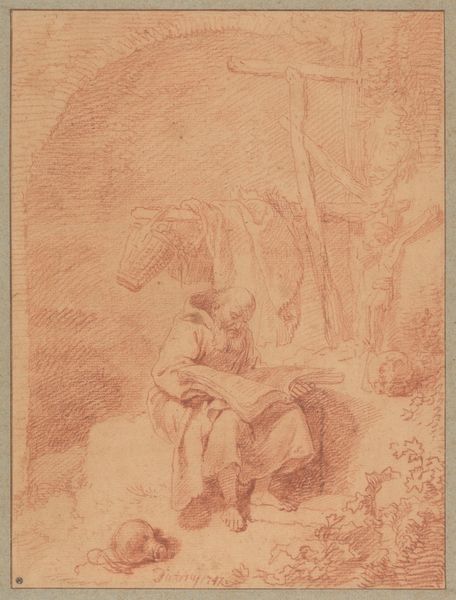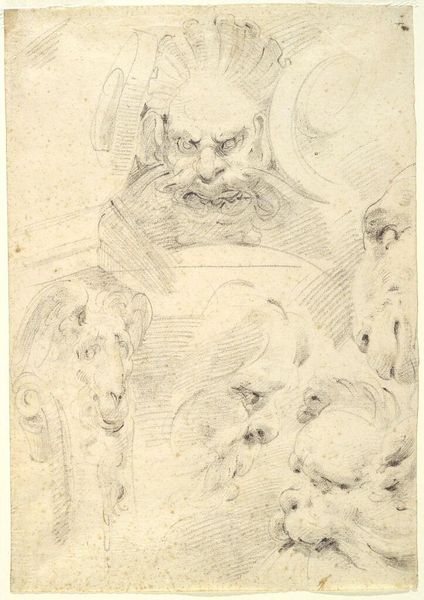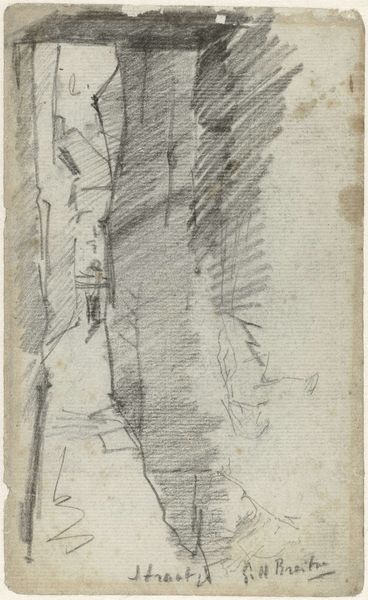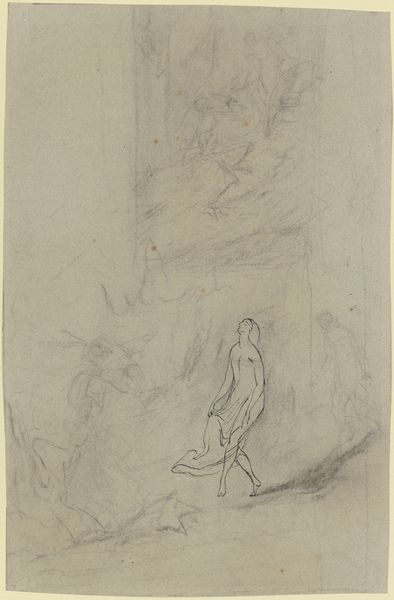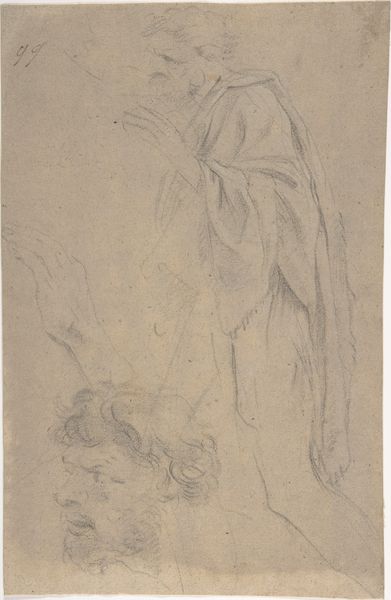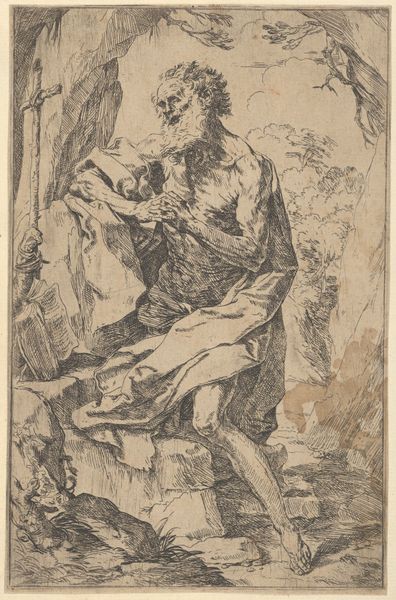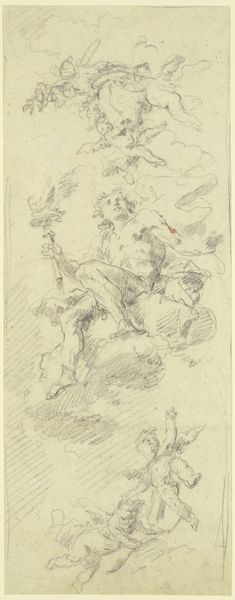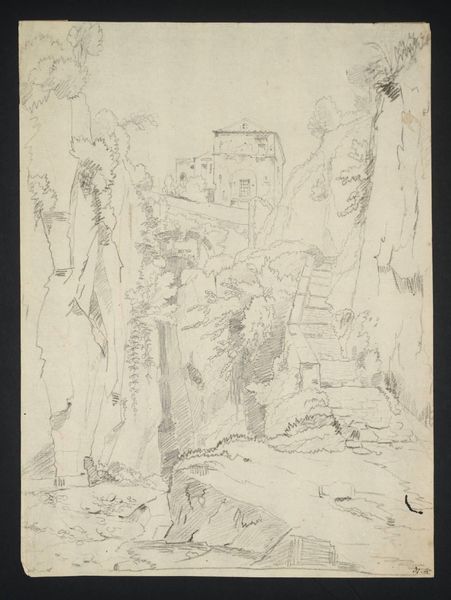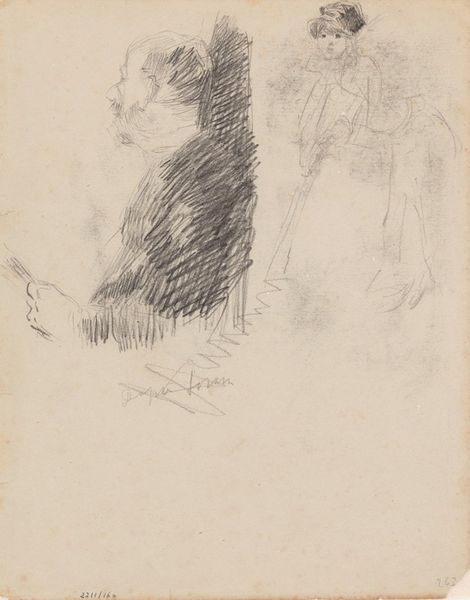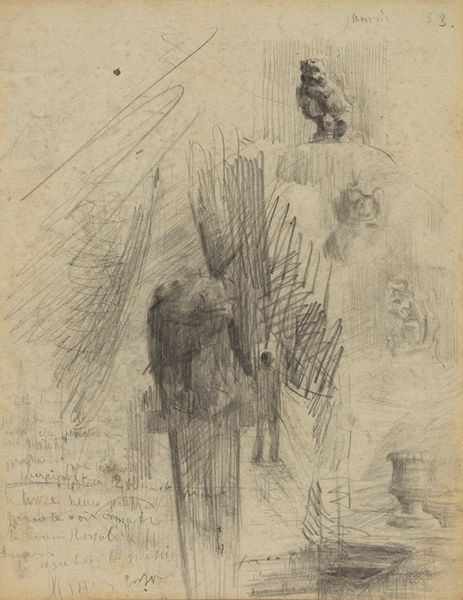
drawing, paper, graphite, architecture
#
portrait
#
drawing
#
paper
#
graphite
#
nude
#
architecture
Dimensions: 16 × 11 cm (6 5/16 × 4 5/16 in.)
Copyright: Public Domain
Curator: Right, let’s have a look at this page of "Multiple Sketches" by Louis Sullivan, created around 1881. It's a graphite drawing on paper, residing here at the Art Institute of Chicago. Editor: Immediately, I see a study in contrasts. There's this softness, almost dreamlike quality to the shading, yet alongside it, sharper architectural motifs hinting at the man's other career, it almost gives a melancholic atmosphere, or perhaps a tense, pensive one? Curator: Sullivan, of course, is celebrated as an architect, so seeing these elements combined in a single sheet provides great insight. The drawing underscores how ornament was absolutely intrinsic to his architectural thinking and career. We often forget how important drawings were within the artistic and professional practice in this period, pre-digital visualization. Editor: Precisely. The fragmented figure at the top hints at classical ideals, while the ornamentation below the self-portrait is fascinating; its symbolism draws from nature and geometry which is so emblematic of the time. The figure itself seems somewhat idealized, but still in progress, only partially finished and without definitive lines and facial expressions, could this stand for any man or woman? Curator: Yes, Sullivan’s style grew out of the aesthetics of the American Renaissance but then really became an alternative response to Beaux-Arts classicism. These ornamental flourishes and botanical references became really central to his aesthetic vocabulary that broke away from neoclassicism. The sketches feel like a testing ground for some of these concepts that he eventually implemented in constructed projects and buildings. Editor: Absolutely. You mentioned botanical references, they speak of growth and flourishing. Are these details a celebration of industrial America and the rise of its new technologies during the gilded age, where organic and geometric design combined, demonstrating new innovations in how to create spaces and artwork. It all converges. What would his audience have felt when gazing upon his art, how was it viewed within these political and economic parameters of the time? Curator: Sullivan's contributions significantly impacted architectural aesthetics and his legacy really resonated within circles promoting public art. Now, how does this page strike you in conclusion, from a visual standpoint? Editor: I’m left with a sense of striving, searching for form in that junction of organic and constructed ideals, so intrinsic to late 19th-century symbolism. It all shows in these loose pencil marks and sketches.
Comments
No comments
Be the first to comment and join the conversation on the ultimate creative platform.

